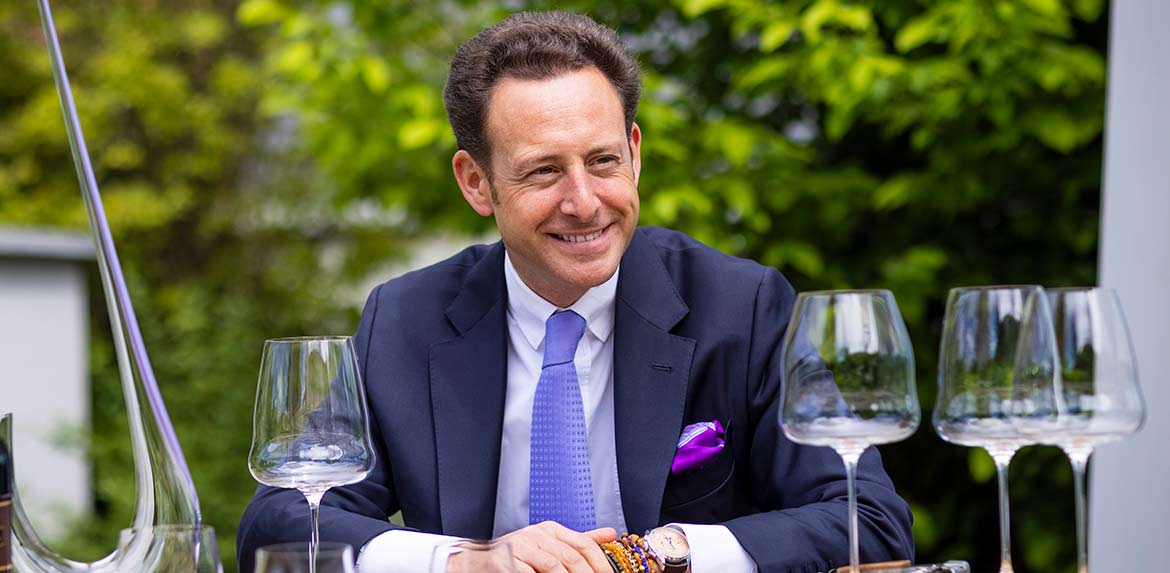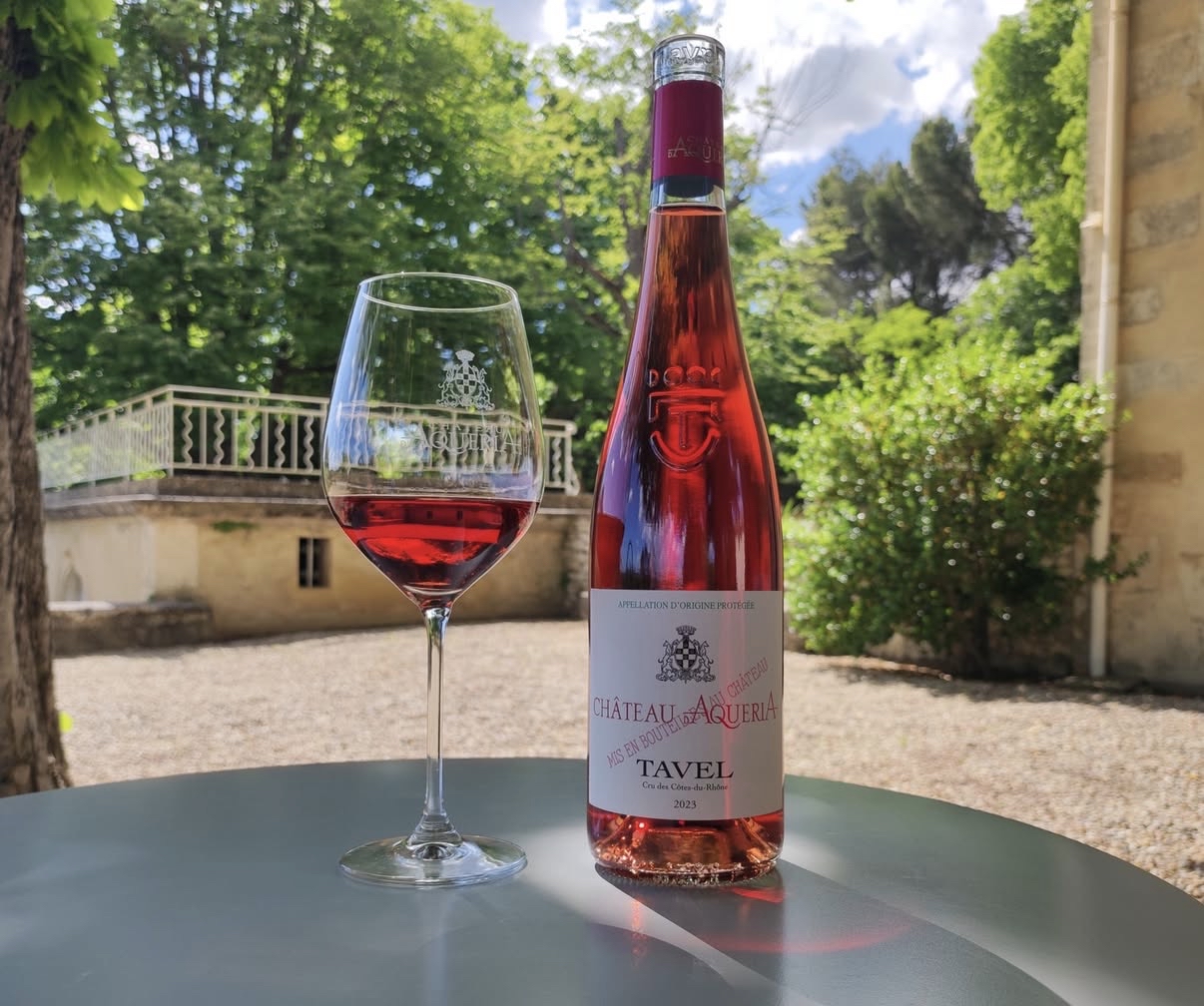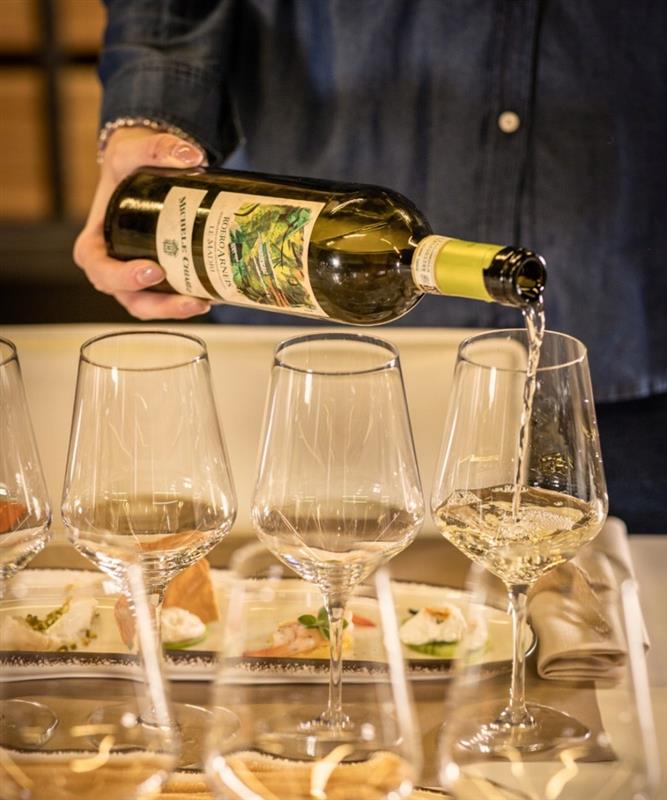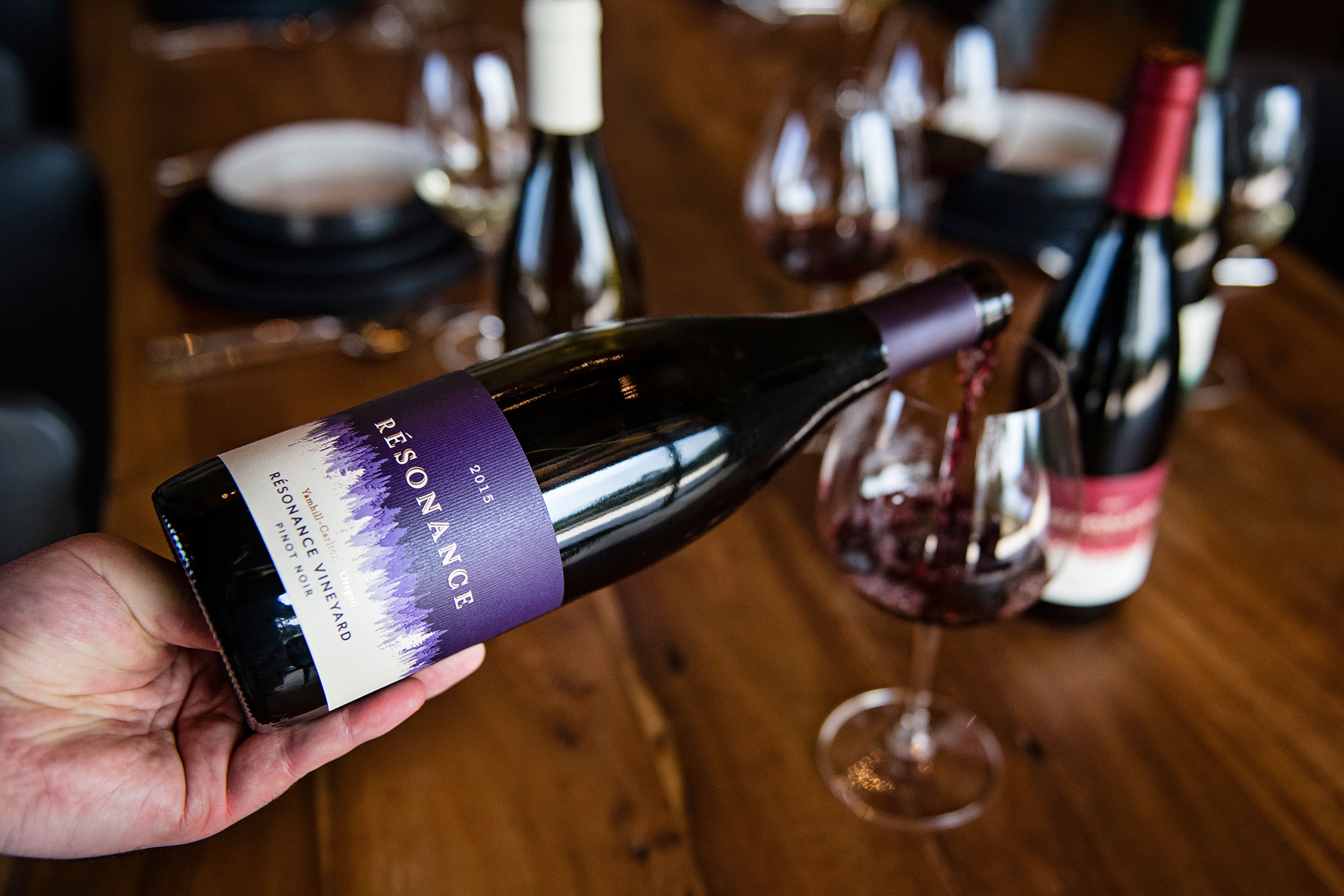Do you use one, favorite glass for drinking red wines, white wines, and pink wines — while using a flute for sparkling wines such as Champagne? If so, then you’re doing it ALL WRONG.
In this podcast episode, wine glass expert and producer Maximilian Riedel of Riedel Crystal explains why you should use a specifically shaped glass that is designed for the wine type you are drinking. And you may be stunned to find out what he has to say about the use of a Champagne glass (also known as a “flute”) when drinking sparkling wines.
Born in Austria, Maximilian is the 11th-generation CEO and president of Riedel Crystal, a glassware manufacturer established in 1756(!) and best known for pioneering the concept of grape variety-specific glassware. Maximilian began interning for his family’s company at age 12, and by age 25, moved to the United States and to take on the role of CEO, Riedel Crystal North America. It was then that Maximilian began to make his mark on both the family business as well as the wine industry, serving as the face of the company by hosting workshops and seminars while also developing innovations in stemware and decanters. For example, while living in a tiny NYC apartment, with cabinets too small to house tall-stemmed wine glasses, Maximilian designed the world’s first variety-specific stemless wine glasses (the Riedel “O” Series).
Between that time and his promotion to the parent company in Kufstein, Maximilian turned Riedel into a household name, the leading wine glass manufacturer in the world, with its variety-specific glasses carried in nearly every major retail outlet — such as Macy’s, Bloomingdales, Williams-Sonoma, Bed Bath & Beyond, Target, Crate & Barrel, and many others.
How To Throw A Glass Tasting
In this episode, we mention “glass tastings” — please, don’t lick or bite your glass! A glass tasting is a fun experiment you can do on your own, but is even better with friends. Here’s how it goes:
1. Choose anywhere from three to ten vessels.
By “vessel,” I mean anything that can hold wine and be drunk out of it. Be both constructive and creative. For example, choose multiple shapes of wine glasses (if you have them), but by no means don’t stop there! ABSOLUTELY mix in a paper cup, a red solo cup (or blue, if that’s your fancy), a styrofoam cup (if you’re evil and hate the planet like that), a plastic cup, a Yeti stainless steel tumbler — whatever you can find. Heck, even mix in a wine bottle, beer bottle, or aluminum can. Just make sure that everyone has the exact same variety of vessels to play with.
2. Choose anywhere from one to three wines of the same color and variety — but at different price points — and pour them into the vessels.
This experiment is interesting when you use just one wine, because it will smell and taste differently in every vessel. The “experiment” turns into a remarkably fun game when you put different wines in different vessels — “blind” — and then guess which wines are which. By “blind,” it means you choose one person to be in another room, away from the participants, who pours the wines into the various sets of vessels for each participant. It’s critical that the pourer puts the exact same wines into the exact same vessels in each set, so that everyone has the same experience. Since it’s a tasting, only about 2-3 ounces should be poured into each vessel. For example, if there are three “blind tasters,” three wines, and five different vessels — consisting of a paper cup, solo cup, water glass, big wine glass, small wine glass — be sure that wine #1 goes into all the paper cups, wine #2 goes into all the solo cups and big wine glasses, and wine #3 goes into all the water glasses and small wine glasses. Obviously, this can get really confusing — especially after drinking a few glasses of wine — so you should map all this out on a piece of paper beforehand, and label the vessels with a marker or masking tape with “wine #1,” “wine #2,” etc.
It is highly suggested that you choose the same variety of wine, but at different price points. So, for example, a $10 Pinot Noir, a $15-20 Pinot Noir, and a $50+ Pinot Noir. You and your guests may be blown away to learn that the $10 wine in a proper wine glass tastes better than a $50 wine drunk from a paper cup.
3. Taste, discuss, and keep score.
Have everyone taste the different wines in the various vessels and discuss what they’re smelling and tasting. The pourer should tell everyone the range of wines that are in front of them — i.e., “So, there’s a $10 Pinot, a $20 Pinot, and a $60 Pinot; guess which wines are in which vessels.” The pourer writes down all the tasters’ guesses.
4. The big reveal!
Once everyone has tasted through all the wines and vessels — and a few vehement discussions have run their course — the pourer can now tell everyone which wines were in which receptacles. Get ready for even MORE vehement discussions accusing tasters of cheating and/or the pourer mis-marking the vessels.
5. Repeat.
If the first round was fun, do it again with another set of three wines. Make a game of it. Try more wines, more vessels, whatever turns the tasting into a rollicking good time!




